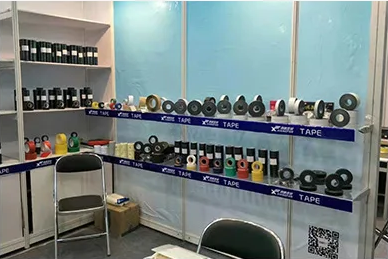Understanding Butyl Rubber Flashing A Comprehensive Overview
Butyl rubber flashing has emerged as a highly sought-after material in construction and roofing applications due to its exceptional properties and versatility. This article delves into what butyl rubber flashing is, its benefits, applications, and some essential considerations for its use.
What is Butyl Rubber Flashing?
Butyl rubber is a synthetic rubber manufactured from polyisobutylene, commonly known for its impermeability to gases and moisture, making it an ideal choice for applications needing durability. Butyl rubber flashing refers to a flexible, adhesive tape typically used in roofing, construction, and other applications to create watertight seals. It’s often applied to corners, seams, and rooftops to prevent water infiltration, thereby prolonging the life of structures.
Benefits of Butyl Rubber Flashing
1. Waterproofing One of the primary advantages of butyl rubber flashing is its waterproof nature. It effectively seals joints and gaps, preventing moisture from entering critical areas.
2. Durability Butyl rubber exhibits excellent resistance to weathering, UV radiation, and ozone. It remains stable under varying temperature conditions, ensuring longevity and reliability.
3. Flexibility This material is highly flexible, allowing it to adhere to irregular surfaces and maintain its integrity even under movement or settling of building materials.
4. Adhesion Butyl rubber flashing adheres well to a broad range of substrates, including metal, wood, and concrete, making it suitable for diverse applications.
5. Easy Application Butyl flashing is generally easy to handle and install, requiring minimal tools. Most products come with a peel-and-stick application method, which streamlines the installation process.
6. Environmentally Friendly Many butyl rubber formulations are non-toxic and do not emit harmful vapors during application, making them safer for the environment compared to some traditional sealants.
Applications of Butyl Rubber Flashing
Butyl rubber flashing serves various roles in construction and roofing
butyl rubber flashing

1. Roofing Systems It is widely used in commercial and residential roofing to seal seams and joints in membrane roofs, ensuring complete waterproofing.
2. HVAC Systems In heating, ventilation, and air conditioning applications, butyl rubber flashing can seal ductwork and prevent air and moisture leaks.
3. Window and Door Flashing This material is ideal for sealing around windows and doors, providing protection against water intrusion and enhancing energy efficiency.
4. Skylights and Vents It creates a barrier around skylights and vents, which are common areas for leaks, ensuring they are watertight.
5. Foundation Applications Butyl rubber flashing is effectively used in foundation applications, where it protects against water intrusion from the ground, thus preventing potential damage.
Considerations for Use
While butyl rubber flashing offers numerous advantages, there are a few considerations to keep in mind
1. Surface Preparation The substrate surface must be clean, dry, and free from dust and debris for optimal adhesion. Proper preparation enhances the longevity of the seal.
2. Temperature Sensitivity Although butyl rubber has good temperature resistance, application in extreme temperatures may affect adhesion. It is often recommended to install flashing during moderate weather conditions.
3. Limitations While butyl rubber flashing is effective against water, it may not be suitable for all environments. In scenarios where there is exposure to solvents or extreme pressures, consulting with a materials engineer or manufacturer may be necessary.
Conclusion
In conclusion, butyl rubber flashing is a vital component in modern construction and roofing applications, providing a reliable solution for waterproofing and sealing. Its unique properties—such as durability, flexibility, and ease of application—make it a preferred choice for many professionals in the industry. As with any material, understanding its properties and best practices for use can ensure optimal performance and longevity, contributing to the safety and durability of structures. Embracing butyl rubber flashing can lead to better, more reliable building practices and improvements in overall infrastructure resilience.
-
XIANGFAN Rubber Tape-Ultimate Solutions for All Your Insulation NeedsNewsJun.24,2025
-
XIANGFAN Rubber Tape-Protection for Industrial and Residential ApplicationsNewsJun.24,2025
-
XIANGFAN Rubber Tape: Superior Safety and Sealing for Demanding EnvironmentsNewsJun.24,2025
-
XIANGFAN Rubber Tape: Reliable Solutions for Every Electrical ChallengeNewsJun.24,2025
-
XIANGFAN Electrical & Industrial Tape: Powering Reliability Across IndustriesNewsJun.24,2025
-
XIANGFAN Electrical & Industrial Tape: Excellence in Every ApplicationNewsJun.24,2025
